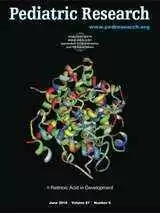
Celiac.com 06/01/2010 - A clinical research team recently examined the increased expression of hypoxia inducible factor 1alpha in celiac disease. The team included A. Vannay, E. Sziksz, A. Prókai, G. Veres, K. Molnár, D. Nagy Szakál, A. Onódy, I. R. Korponay-Szabó, A. Szabó, T. Tulassay, A. Arató, and B. Szebeni.
They are affiliated with the First Department of Pediatrics at Semmelweis University, and with the Department of Gastroenterology-Nephrology of Heim Pal Children's Hospital, both in Budapest, Hungary. They are also involved with the Research Group for Pediatrics and Nephrology, a joint project between the two institutions.
Celiac.com Sponsor (A12):
The team set out to follow-up on the hypothesis that hypoxia inducible factor (HIF) 1 signaling may play a key role in maintaining the barrier function of the intestinal epithelium in cases of inflammatory bowel disease (IBD).
In their 2008 article, "The human side of hypoxia-inducible factor," which appeared in the British Journal of Haematology, Smith, Robbins and Ratcliffe define Hypoxia-inducible factors (HIFs) as transcription factors that respond to changes in available oxygen in the cellular environment, specifically, to decreases in oxygen, or hypoxia.
The team wanted to characterize the variation of HIF-1alpha and related genes in celiac disease, where the importance of the barrier function is well understood.
To accomplish their goal, they gathered duodenal biopsy specimens from 16 children with untreated celiac disease, 9 children with treated celiac disease, and 10 control subjects.
They assessed HIF-1alpha, trefoil factor 1 (TFF1), ecto-5-prime nucleotidase (CD73) and multi-drug resistance gene 1 (MDR1) mRNA and HIF-1alpha protein expression by real-time PCR and Western blot, respectively. They assessed localization of HIF-1alpha by immunofluorescent staining.
The team observed increased HIF-1alpha and TFF1 mRNA and HIF-1alpha protein expression in the duodenal mucosa of children with untreated celiac disease compared to either the control subjects, or those with treated celiac disease (p<0.05).
Children with untreated celiac disease showed HIF-1alpha staining in cytoplasmic and nuclear region of the villous enterocytes.
Children with treated celiac disease showed increased mRNA expression of CD73 and MDR1 versus control subjects (p<0.01 and 0.05, respectively).
The results of increased mucosal HIF-1alpha expression in children with celiac disease suggests influences from this signaling pathway in the pathological mechanisms of celiac disease.
Source:
- Open Original Shared Link 2010 May 5. PMID: 20453713





Recommended Comments
There are no comments to display.